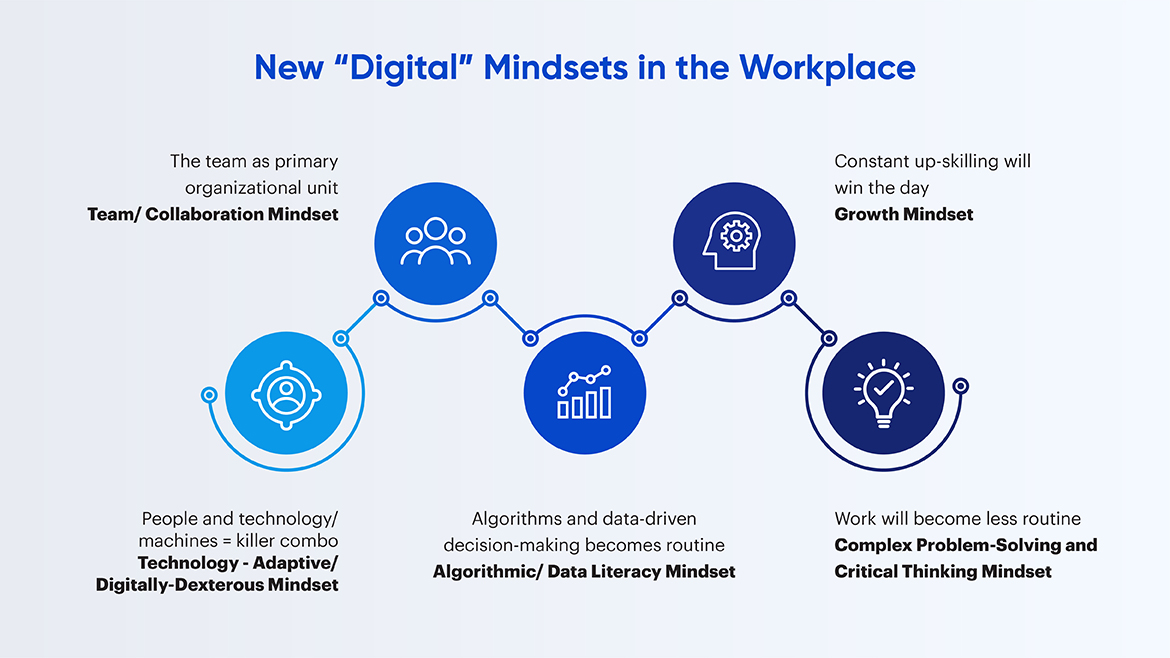In order to respond and adapt in a timely manner during the COVID-19 outbreak, many enterprises have to shift from traditional to remote working models to maintain daily operations or apply the “3-on-site” option with strict social distancing requirements. Up to millions of workers nationwide have been affected, resulting in increasing unemployment and underemployment rate or income reduction (1).
Some enterprises that have implemented digital transformation before still maintain stable production and development activities thanks to technology application, while the rest faces numerous difficulties and do not have a feasible plan to respond to the pandemic. The resilience and creativity of enterprises in applying 4.0 technology are still limited in many aspects due to the shortage of high-quality labor resources. Currently, out of 52 million employees, only more than 25% are statistically trained with certificates and diplomas, while nearly 75% have no statistics on the capacity and skills to meet labor market requirements (2). Regarding the digital skills of the workforce, Vietnam has dropped 4 places to 96th place in the 2020 Global Talent Competitiveness Index (GTCI) (3). Therefore, training to improve the capacity of employees will be essential when businesses want to recover and make a breakthrough after covid-19.

Steps to improve worker productivity during and after the pandemic
Digital competencies are the skills and knowledge that a person needs to have to study and work in a digital economy society, including accessing, retrieving, understanding, evaluating, using, creating and sharing information in any format, using digital systems, tools, and applications. At the organizational level, digital capabilities include a culture of innovation, technology and IT infrastructure to help organizations gain quality human resources, optimize operations and create new products and services for end-users (4).
To enhance digital capabilities, managers and individuals need to have the following 5 basic digital mindsets to adapt and embrace the changes that businesses will experience in the digital era.
- Team/Collaboration mindset: the coordination between team members, the ability to turn members’ advantages into organization’s ones so that the team can achieve high efficiency at work and conquer the common goals
- Growth mindset (open thinking, non-stop learning): accepting failure, drawing valuable lessons to continue solving problems, and always looking for capacity development opportunities.
- Technology mindset: strategic orientation of innovation through selection and application of appropriate technologies.
- Data literacy mindset: the ability to read, analyze, and evaluate which data is useful to make important decisions.
- Complex problem-solving and critical thinking mindset: asking questions, defining problems, examining evidence, analyzing assumptions and biases, avoiding emotional inference and oversimplification, and considering different interpretations.

Steps to measure and improve employee digital capabilities within an organization

1. Evaluate and identify changes in work processes, what digital skills and tasks are needed for improvement, and set specific targets on what skills the post-recovery model will need. For example, if a traditional sales model shifts to an online one during the pandemic, the technology and logistics workforce may generate a big impact on businesses. Hence, there is a critical need to equip those people with necessary skills.
2. Develop a core digital mindset and capacity as a strategy for key teams with core knowledge and skills as the foundation for them to grow along with the business, to be ready for changes or organizational disruptions in a proactive and positive manner.

3. Develop and implement an on-demand capacity building program.
– Divide human resources into groups: leadership group, management group, group of experts, group of workers. In particular, the group of experts implementing digital transformation projects can be divided into two groups: experts in professional fields (such as production, investment, business….) and information technology experts. Each group will have its own tailored training programs based on their actual needs.
– Combine various forms of training: intensive classes, seminars, seminars on digital transformation conducted by international experts, consulting companies and on an e-Learning platform.
4. Coordinate with the marketing department and certain specialized business units to develop content and communication methods that are appropriate for each target group and their learning ability, to form a culture of continuous learning and development.
5. Evaluate and measure the effectiveness of training programs for continuous improvement.
Train and improve human resources will construct the business foundation for recovery and breakthrough in the post-covid-19 era, improving competitiveness and keeping moving ahead. Therefore, a detailed training roadmap in business may shape high-quality teams that are suitable for business model innovations to ensure the success of their post-pandemic recovery strategy.
Reference sources:
(1) VNE. Làm sao để cải tiến năng suất lao động trong đại dịch?
(2) Bộ Lao động, Thương binh và Xã hội. Thống kê 2021
(3) INSEAD. 2020 The Global Talent Competitiveness Index
(4) JISC. What is digital capability?





